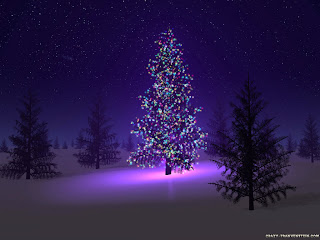With the holiday season upon us, many of you will be buying or receiving Poinsettias. These showy beauties need special care but if you follow a few easy rules, there is no reason why your Poinsettia can’t last for many months. You may even be able to coax it to re bloom next year.
First a little Poinsettia history. Amateur botanist and the first American Ambassador to Mexico, Joel Poinsett, introduced the Poinsettia to the United States in 1828 from its home in Mexico. There, Poinsettias are a perennial shrub that can grow up to 10 or 15 feet tall.
There are over 100 varieties of Poinsettias available today, including traditional red, salmon, pink, white, burgundy, multi-coloured, marbled and speckled. “Prestige Red” ranks as the most popular colour, followed by white and pink. More than 6o million Poinsettias are sold each year in the U.S. Last year. They account for about one third of sales of all flowering potted plants available on the market.
Choosing your Poinsettia
Choose plants that:
· have dark green foliage right down to the soil line
· don’t have missing or yellow leaves
· are not displayed in stores in paper or plastic sleeves; as these wrappings encourage deterioration of the plant
· Are not too mature. If the yellow blossoms at the base of the bracts are showing pollen, this indicates that the plant will not last as long as the one whose flowers are tight, green or red tipped and fresh looking.
Always check for aphids or white flies on the underside of the leaves, as these are a very common problem for this variety of plant.
Care of your Poinsettia
Make sure your plant is wrapped well for its trip home in cold weather. Exposure to low temperatures, even for just a few moments, can harm the plant.
Slice the sleeve open rather than pulling the plant out, which can easily damage the leaves.
If a branch happens to break, you may notice that they ooze a milky sap. This is normal for a poinsettia to “bleed” and it will stop. How ever, if you have skin allergies, wear protective gloves when handling your Poinsettia as a precaution.
Place your Poinsettia in direct light but not near a chilly window, making sure that it does not touch cold windows.
Six hours of light daily is required to keep your Poinsettia healthy.
Do not place your Poinsettia in a warm or cold draft.
Ideally, poinsettias require a daytime temperature of 60-70 degrees F; night time temperatures should be around 55 degrees F.
Water your Poinsettia when the earth feels dry just below the surface. Keep the soil moist at all times, not soaking wet, making sure to always provide good drainage, never letting your plant sit in water.
Contrary to what most of us have heard, Poinsettias are not toxic, according to a study done at Ohio State University. A child would have to ingest an enormous amount of leaves for there to be side effects. As for dogs and cats, Poinsettias are usually categorized as ‘mildly toxic.’
Getting your Poinsettia to re bloom
To get your Poinsettia to re bloom is quite a challenge as you will have to simulate the plant’s life cycle.
Once blooming has stopped, probably around March, begin letting your plant dry out more between waterings, and actually water less than before. If you notice the bottom of the stems starting to shrivel, it means you have gone too quickly and the plant is in stress. After a week or two place your poinsettia in a cooler place and continue new watering schedule, inducing its dormant state. In mid May, prune the plant back to about four to six inches from the top of the container. It is also a good idea to repot it into a slightly larger pot with fresh soil. Place it in a very bright sunny window. Begin to water your Poinsettia regularly and fertilize every two weeks.
Your Poinsettia can be kept outdoors in the summer, starting in June, in an area that provides it with bright indirect light (partial shade). Continue the watering and fertilizing schedule. In early July, pinch tips to promote branch growth, about 1 inch off the top. If not done, your plant may grow tall and lanky instead of full and lush. By August it should have branched and become much fuller, time to pinch it back one more time then bring the plant back indoors to a bright location.
In order to promote blooming in your Poinsettia, requires giving it less than 10 – 12hours of daylight a day, for about a 10 week duration. So at the end of September or early October you need to have your plant in total darkness let’s say between the hours of 5 PM to 8 AM, every day. Covering your plant with a cardboard box is the easiest method for creating this dark environment. This will stimulate your plant to produce flowers. If placed in a cupboard, be careful, as any light that gets in may affect your chances for success (like opening the cupboard). Continue regular watering and fertilizing.
If all goes well by mid to end of November (depending on when you started the process) you can stop with the darkness treatments, and leave your plant in a bright area, preferably in front of a window. Hopefully at this point some buds should be visible.
In mid December or so, you can finally stop with the fertilizing, and treat your plant as you did when you first brought it home. With care and some determination your Poinsettia should reward you with many flowers to last you through the winter, till its time to start the process all over again.
Written By:
Linda Maislin


